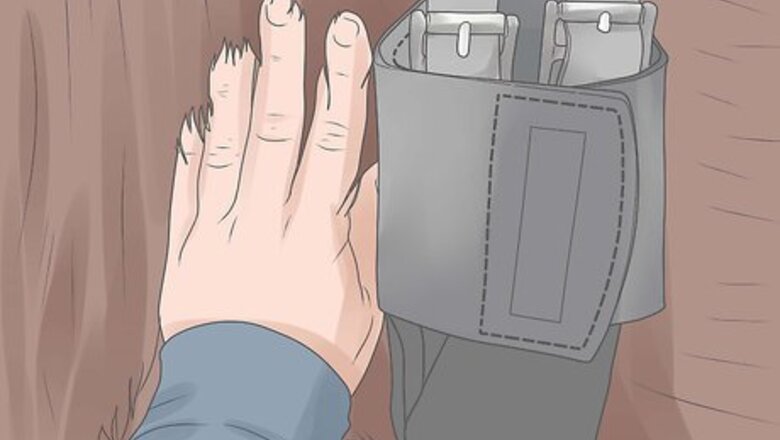
views
Teaching From the Ground
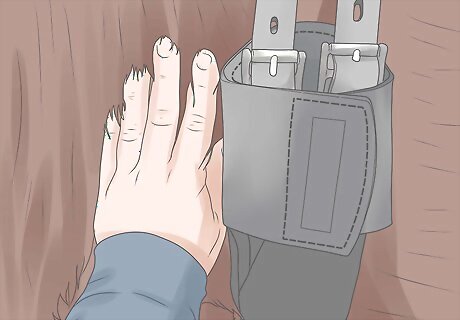
Test your horse’s ability to move away from pressure. The natural instinct of your horse should be to move away from where pressure is applied - the same instinct humans have. Test this reaction in your horse by bumping them with an open palm near the girth where you would bump them with your calf. They should move away from your hand, possibly already in a side pass. Continue bumping your horse near the girth with added pressure if they do not respond to you. As soon as they take a step away, release pressure and reward them. Practice this until your horse needs only a single bump, or no bump at all (just pushing energy with your hand towards their girth), in order to move away from you.

Train a turn on the haunch. Put your horse on a lead rope, and if necessary grab a crop. Stand so that your body is positioned slightly behind the barrel of your horse’s body, and gesture with your arm or crop towards their shoulder. If they do not respond to this, then apply pressure on their shoulder. The goal is to get them to move away from your pressure by rotating their body around their back legs. If your horse turns away or simply walks in the opposite direction rather than crossing their front legs in a turn, grab the lead rope and hold them straight ahead. As soon as your horse crosses their front legs in a turn on the haunch, release pressure, drop your eyes, and reward them for doing what you asked. Continue practicing a turn on the haunch on the ground, so that your horse will respond to the same cues when riding.
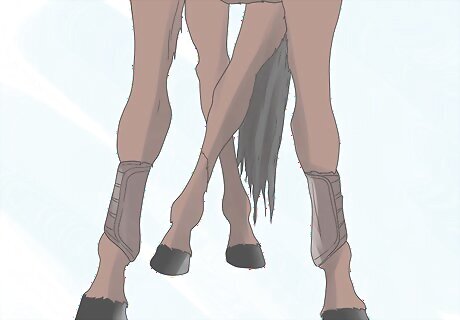
Train a turn on the forehand. Similar to a turn on the haunch, a turn on the forehand is done when your horse rotates their entire body around their front legs by crossing their back legs. Accomplish this by standing near the shoulder (to block shoulder/forward movement) and gesturing towards the haunch with your crop or open hands. If they don’t respond without pressure, add a bit by pushing against the haunch with your open hands, or tapping them with the crop. Don’t remove pressure if your horse simply backs away or turns to the side. Straighten them out if necessary, but continue bumping with pressure until they take at least one step by crossing their legs. As soon as your horse achieves a single step in a turn on the forehand, release pressure and reward them for following your cues. Practice this over and over until your horse requires a minimal amount of pressure to accomplish a turn on the forehand.

Combine your groundwork to accomplish a grounded side pass. Stand next to your horse near the barrel of their body, using a crop if necessary. Bump the girth of the horse to tell them to move away; if they don’t move how you want, give them the cues for a turn on the haunch and a turn on the forehand. Continue working back and forth between your cues until your horse clues in and does at least a single successful step in a side pass. Reward your horse and release pressure as soon as they take even a single step in the form of a side pass. Continue doing this until they don’t need to be cued for a turn on the forehand and a turn on the haunch in order to recreate a side pass. Eventually they should only need to be bumped on their side near the girth.
Training a Side Pass in the Saddle
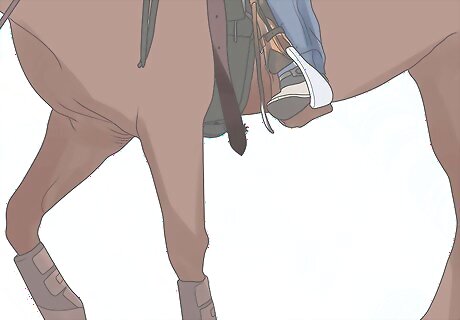
Move your horse into position. When starting to teach a side pass from the saddle, it is easiest to move to a location where your horse won’t mistake your one-sided bump as a cue to move forward. Therefore, move your horse so that they are facing a fence or a wall. This will allow them only movement to the side or in reverse.
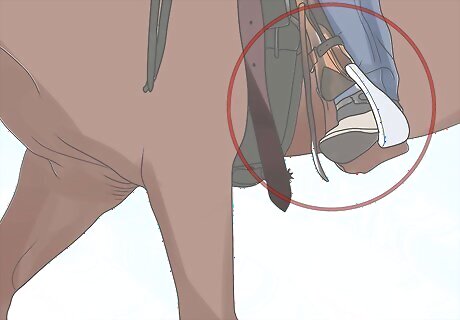
Open your body to create the proper lines of communication. Your body language is what tells your horse what you’re asking, so in order to get what you want from your horse, you need to practice as well. If you’re side passing to the left, lift your left leg to release pressure and lift the left reign up and out slightly to open movement towards the left. You will apply pressure on your right side. To side pass to the right, reverse these cues so the right side of your body is open and you apply pressure on your left side.
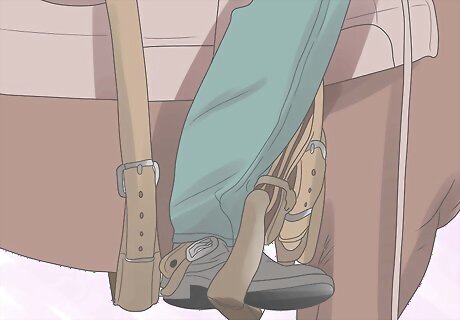
Cue your horse to side pass. With one side of your body open, move your opposite leg forward and bump your horse with your calf near the girth. Make sure you keep the opposite side of your body open as you do this. Continue bumping with added pressure if necessary, and then stop as soon as your horse takes at least a single step in a side pass. Reward your horse as soon as they manage this.

Practice the side pass at a stand still. Continue using the same cueing patterns you’ve taught your horse to get them to side pass. Do this for a while against a wall or a fence until your horse has it down, and then move to an open area and do it again. Practice until your horse can sidestep several feet in both directions in an open area.

Perform a side pass while walking. The moving side pass is in theory the same as a stand-still seated side pass, the only difference is more pressure is put on the rider to perform the cues correctly. Follow the same aforementioned directions, but as your horse walks cue the side pass by bumping their side at the same time their barrel moves in the direction of the side pass. The barrel of the horse swings back and forth as they walk, so there will be a break between bumps rather than constant pressure. Performing a side pass while walking requires more attention as well, as the horse can more easily get away with simply turning instead of side passing. Have a friend or trainer stand on the ground and give feedback on your body language and your horse’s reactions.
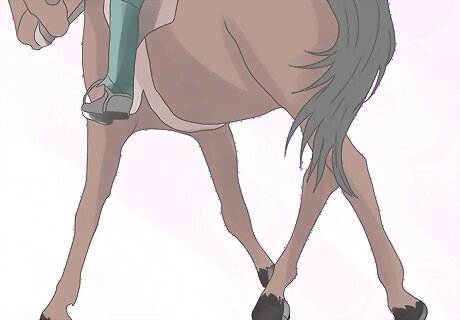
Perform a side pass at higher speeds. When you feel you have perfected the side pass in both directions at the walk, cue your horse into a trot and eventually a canter and cue the side pass. This gets increasingly difficult for the rider, but the horse should respond the same. Just remember to time the leg-bumps near the girth with the swing of the barrel. It may be helpful to perform a half-halt before cueing the side pass when you are doing so at a trot or canter.



















Comments
0 comment